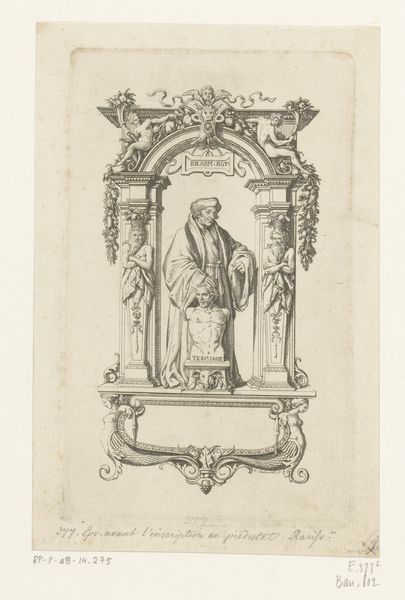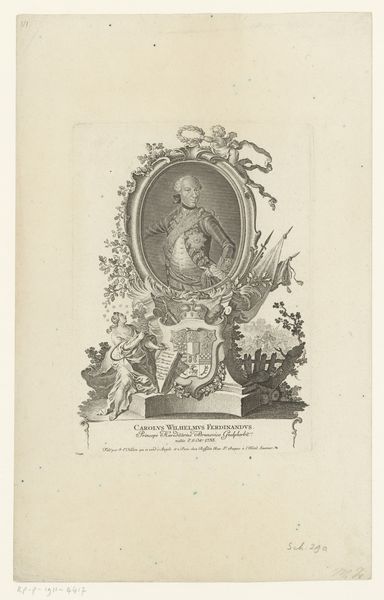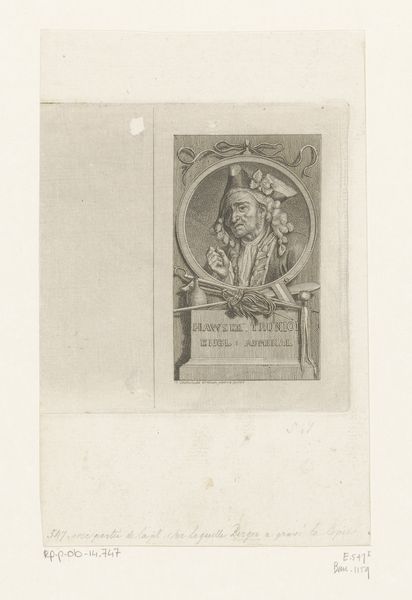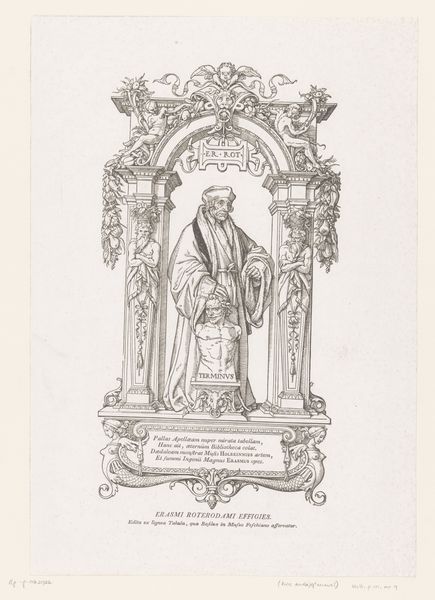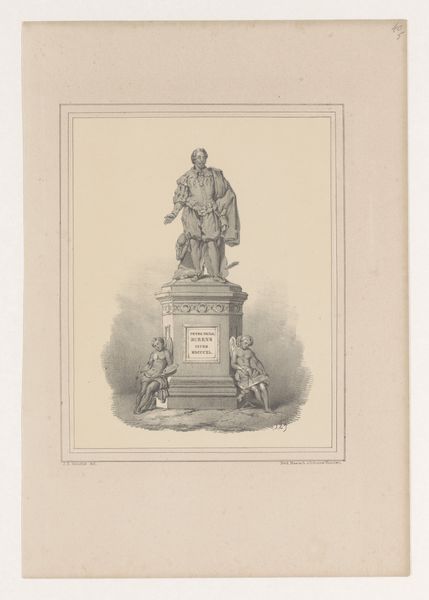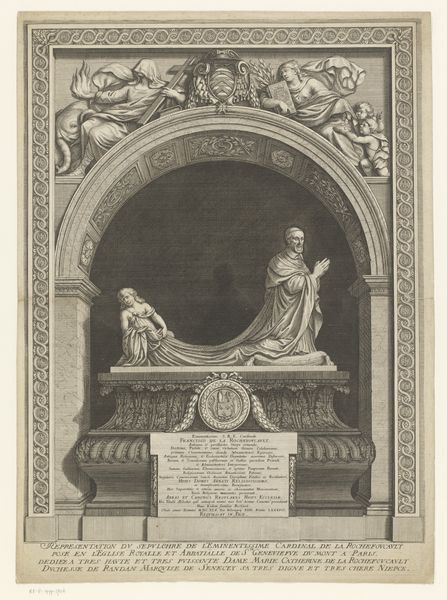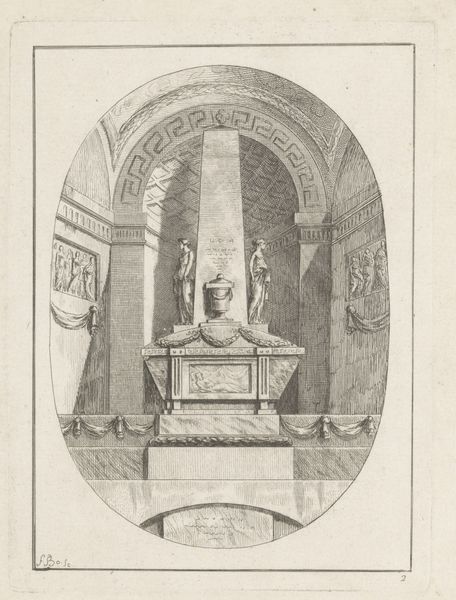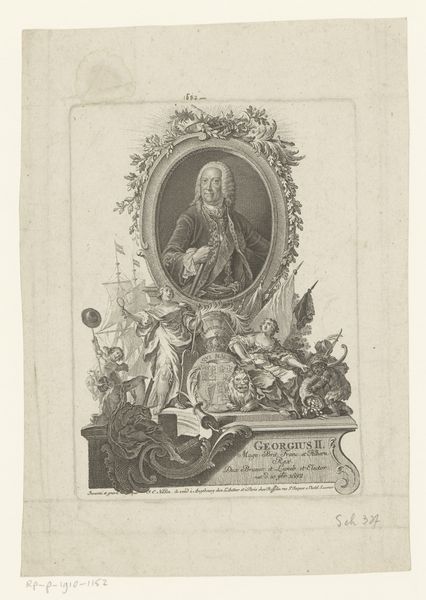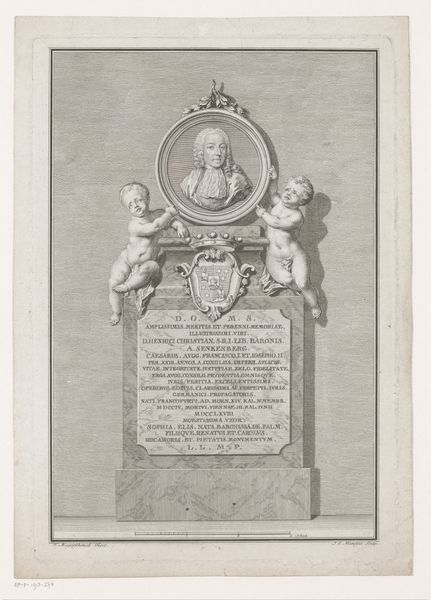
print, engraving
#
portrait
# print
#
pen sketch
#
old engraving style
#
figuration
#
form
#
pen-ink sketch
#
line
#
history-painting
#
academic-art
#
engraving
Dimensions: height 373 mm, width 274 mm
Copyright: Rijks Museum: Open Domain
Jean Baptiste Amédée Guillaume created this detailed portrait of Desiderius Erasmus using etching and line engraving. The image is dominated by a symmetrical composition, framed by classical architectural elements and ornate decorations. This gives it a sense of formality, perhaps seeking to convey Erasmus's intellectual stature. The use of line, from fine hatching to bold outlines, creates a rich visual texture and depth despite the monochromatic palette. The positioning of Erasmus above a bust labeled "Terminus"– the Roman god of boundaries– suggests ideas about knowledge and its limits. Erasmus's gesture of placing his hand on the bust could be interpreted as a symbolic act of mastering or contemplating these boundaries. Guillaume masterfully employs techniques of engraving to generate tonal variation, thus enhancing the visual impact. The overall effect invites a semiotic reading of the image, where architectural motifs, inscriptions, and the figure of Erasmus become signs within a larger discourse on humanism and classical knowledge. This engraving serves not only as a portrait but as a complex symbol of Renaissance ideals.
Comments
No comments
Be the first to comment and join the conversation on the ultimate creative platform.
